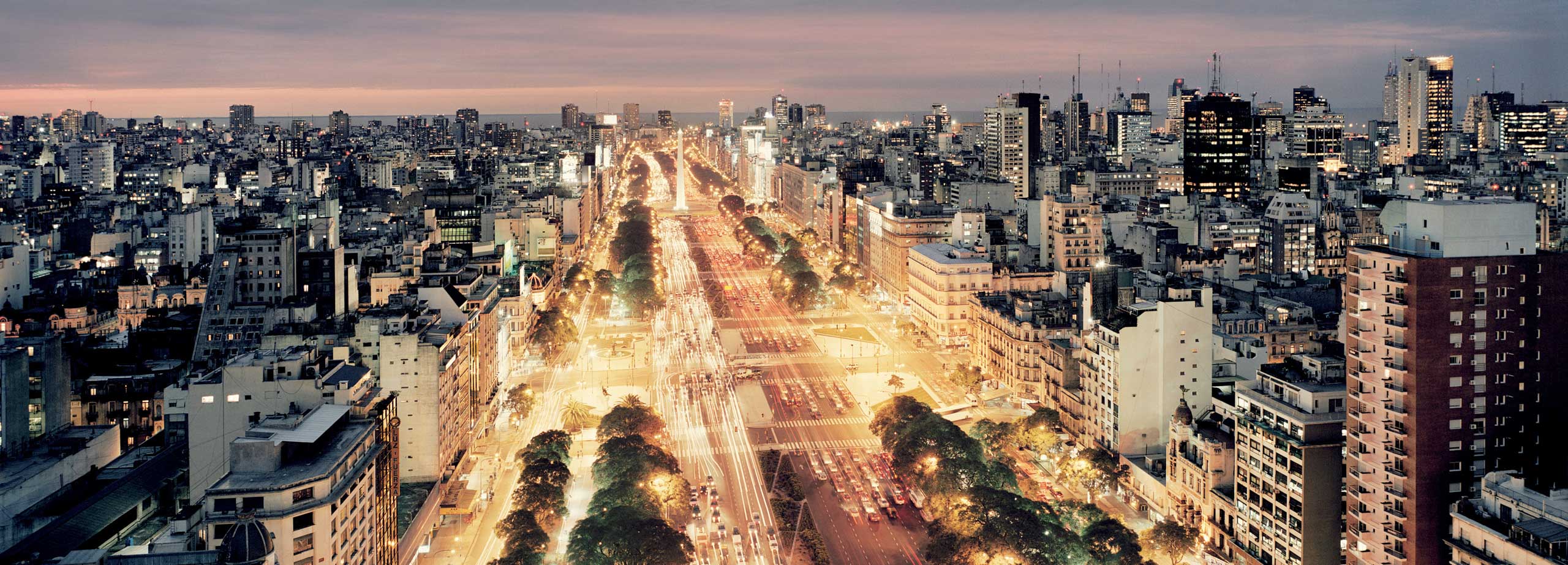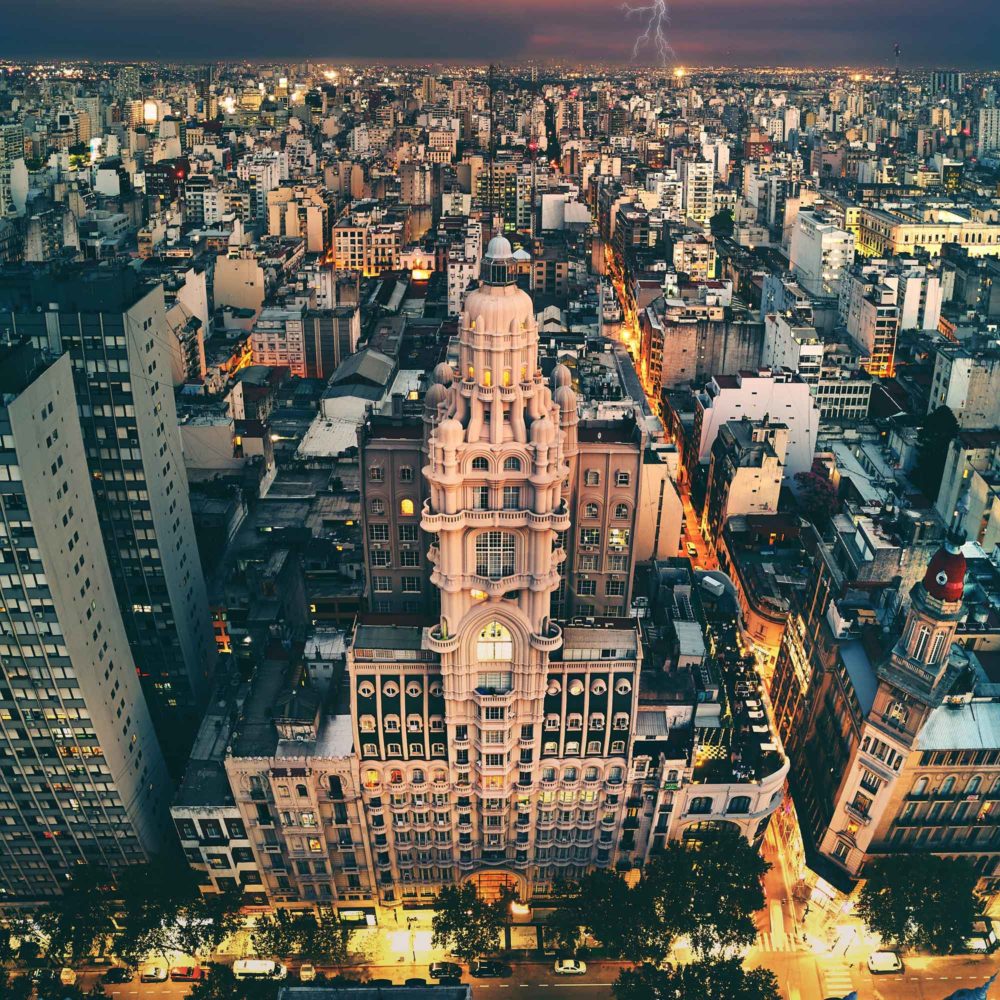The Ultimate Guide To Buenos Aires, Argentina
Buenos Aires Overview
Buenos Aires is the cosmopolitan capital of Argentina with a population of over 12 million. BA is a fun-loving city, and the locals call themselves porteños, which means ‘people of the port’ because most early immigrants arrived by ship. In general, the locals are very relaxed, and while arriving late is not considered rude (more like the rule). At its heart is Plaza de Mayo, with its beautiful 19th-century buildings. Among the major attractions in the plaza are the presidential palace, Casa Rosa, with the balcony where Evita Pérron made many of her appearances. The Teatro Colón, the enormous opera house built in 1908 with a capacity of 2,500, and the modern MALBA museum, featuring Latin American art is also in this plaza.
Buenos Aires Neighborhood Guide
This exciting city is home to so many wonderful neighborhoods, or barrios, that you could spend many weeks exploring the city without experiencing them all. Some of the best barrios are Belgrano, Palermo, Puerto Madero, Recoleta, San Telmo, and Microcenter.
Best Time to Visit Buenos Aires
The two best times to see Buenos Aires are in spring, between September and December, or the fall, between April and June, when the temperatures are mild and the spring or fall colors at their best. Because there may be fewer tourists at these times, hotel prices are also more reasonable. But, if these seasons don’t fit your plans, anytime is good. January is the hottest month with highs on 30°C (79°F), while July is the coldest with highs about 25°C (56°F).
How to Get There (and Away)
Argentina’s main international airport is Ezeiza Ministro Pistarini located 42km (26 miles) to the west of Buenos Aires. It takes at least 45 minutes to an hour for travel between the airport and the city, and more during rush hour. Whether you are arriving or leaving, Ezeiza Airport is well connected to Buenos Aires city centre with several bus lines if you’re looking for budget options: Colectivos (city buses), urban buses and a couple of minibuses / shuttles, although if you’ve come in at a busy time, you may have to queue for these. One option is a Leon bus which runs roughly every 30 minutes between the city and the airport. Don’t panic if there are queues because there are also taxis and rental cars available. Taxis are the most hassle-free means of getting into town and will cost you less than US$10.
How to Get Around Buenos Aires
There’s no need to rent a car in Buenos Aires because of the other convenient options. The best way to get around Buenos Aires is “the subte,” the subway. It is quick, affordable, and easy to navigate with maps which are easily obtainable at subte stations. Bus lines are also efficient, although less used by tourists. Taxis are available but try to use the black and yellow radio taxis, which are metered, because others may take the long way round, so they can charge more. Although Uber is present in the city, it has an ongoing dispute with authorities. Another option is hiring a “remis” where the car comes with a driver, although you will have to book for a number of hours. Although more expensive, this is a reliable way of getting around the city, especially if you want to sightsee without having the navigate your way around. The company, Remises Universal, conveniently has its headquarters in downtown Buenos Aires.
Buenos Aires Essential Details:
- Language: The official language of Argentina is Spanish
- Money: Argentina uses ARS pesos, and foreign credit cards are generally accepted at most major restaurants, stores, large supermarkets, hotels, etc., although you may need to check on the acceptability of yours before you leave home. Visa is the most widely accepted, with Amex the most likely to be rejected
- Entry requirements: Generally, you don’t need a visa to enter Argentina as a tourist. With a valid passport, it should have a minimum validity of 6 months after arrival. Check with your embassy on Covid health regulations to see if you can travel to Argentina
- Electricity: Argentina operates on a 220V supply voltage and 50Hz. There are two associated plug types, types C and I. Plug type C is the plug which has two roundpins and plug type I is the plug which has three flat pins in a triangular pattern
- Cell Service: There are three mobile phone companies in Argentina: Movistar (owned by Telefónica), Claro, and Personal. Although they are similar, Claro is said to have the best rates, while Movistar has the best coverage and Personal has the best service
Where to Stay
Where to Stay
- Belgrano. This combined commercial and residential area also has a good choice of mid-range with easy access to shops, cafes, boutiques and cinemas with good transport options.
- Palermo is one of the most popular places to stay in Buenos Aires, boasting the city’s largest park, beautiful architecture and plenty of attractions for art lovers. It is made up of a number of small areas, each with its own name. When you are looking for accommodation, consider Palermo Soho and Palermo Hollywood, with Soho being the place to base yourself if you’re on a budget.
- Puerto Madero has a good choice of hotels to choose from, starting with affordable comfort to luxury accommodation. The subway or a bus provides easy transport to other barrios. The closest subte stop is Alem, on the B line, and a new tourist train runs the length of Puerto Madero, Northeast of Plaza de Mayo, this barrio is the Buenos Aires version of Manhattan.
- Recoleta. This is not a budget place to stay, but the experience of staying in one of the many hotels located in historical buildings is worth it. This barrio’s location close to the centre of the city gives you options to move around easily.
- San Telmo is a popular place to base yourself. Not only is it cheaper compared to Palermo and Recoleta, with a good selection of hostels, but it is a great place to enjoy charming locations with cobblestone streets and a large street market. It has easy on Subte line C, which follows Avenida 9 de Julio.
- Microcentro is home to Plaza de Mayo, the historical and political heart of Buenos Aires, and it gives you a wide range of places to stay, with most centred around Avenida de 9 Julio – the city’s main north-south thoroughfare – with rates and quality rising in the more cultural northeast of the quarter. Being in the center of the city, there are plenty of transport options.
What to Eat
Argentinians love their beef, but there are also plenty of culinary delights to try on your visit, many of which reflect the tastes of the Mediterranean where many Argentinians have their ancestral roots. Some of the best dishes to try are any form of grass-fed beef (but a bife chorizo is a must!), empanadas, pasta, and faina. Try having an asado, accompanied by Torrontés; and be sure to stop for a choripan for a lunch-or any-time treat. (Torrentés would go well with this, too!)
There are many and varied places to eat, depending on the type of cuisine you decide on, but Palermo Hollywood and Palermo Soho both have wonderful eateries that reflect the culture of the city. If you are looking for more international cuisine, and a selection of typical Argentinian dishes, you may find Puerto Madero waterfront more to your taste. Whichever way you go, you are bound to have a great foodie experience that will make your followers on Instagram drool with envy. Be warned though, Porteños tend to head out late, with many restaurants appearing deserted before 10PM.
Insider info: Empanadas are the classic on-the-go food in Buenos Aires, and some say the Argentine style of empanada, fried or baked dough with a variety of meat or vegetable fillings, is the best in Latin America. The pattern on the crust indicates the filling, so ask a local for help.
Faina is a thick, savory pancake made from chickpea flour and olive oil, usually seasoned with rosemary, and eaten with pizza. So order a muzza con faina (farinata with mozzarella pizza) to sound like a local.
An asado is a grill; Torrontés is a white wine grape; choripan is a crusty bread sandwich made with grilled chorizo sausage.
Sights of Buenos Aires, Argentina
There is so much to see and do in this dynamic city, so you will be spoilt for choice, from antique shopping to admiring the architectural gems, from enjoying the cuisine to tango dancing and a whole lot more. Sadly, you won’t have time to do it all, but here are some highlights to get you started.
Most Popular Things to do in Buenos Aires
Plaza de Mayo: This plaza at the heart of the city is a must see, and it could be a good place to start because it is the location of the city’s beautiful main cathedral, the Teatro Colon, Casa Rosada, and the Cabildo. In the center of the plaza is a white obelisk, the Pyramidé de Mayo which was erected to celebrate the first anniversary of Argentina’s independence from Spain. This is where locals gather to celebrate and protest, and the mothers of the disappeared gather here every Thursday afternoon, bearing photos of their lost children, some of the many who disappeared during the dictatorship from 1976 to 1983.
La Glorieta: Free and open to the public, this gazebo is in a plaza near Belgrano’s Barrio Chino, and on weekend evenings it transforms into an open-air place for tango dancers of all ages and skills. If you’re looking to learn the dance’s steps (as well as its complex etiquette), go early for classes (5–6:30 p.m.) before the dance floor opens. Dancing goes on until 11 p.m. but may be cancelled if it rains.
River Plate Museum: Football fans will have this museum of football memorabilia high on their list. Situated on Av. Pres. Figueroa Alcorta, and located next to the stadium, this is the largest museum in South America dedicated to the beautiful game. Ardent fans can book a guided tour to see both.
Cuidad Cultural Konex: For those with gentler tastes, this vast center in Villa Crespo is used for musical, theatrical and art events so see what’s on when you are in town, but one regular show is the percussion band of La Bomba Tiempo on a Monday night, so try and coincide your visit to with one of their performances.
Recoleta Cemetery: Visiting a cemetery when on vacation may seem bizarre, but this one is a must see for its famous mausoleums, including legendary Evita Péron, and other works of art. Take time to stroll around and be fascinated by the sites. If this gets you hooked on visiting those long gone, fit is a visit to the large Cemetario de la Chacarita, also known as the National Cemetery and situated between Palermo and Villa Crespo to see the resting places of by-gone tango greats.
Jardin Botanico Carlos Thys: Located in Palermo, this triangular-shaped garden boasts a wide collection of plants as well as being home to 33 sculptures. It also has different themed gardens, including Roman, French and Oriental. With 5 greenhouses and 7 hectares of ground, it is bound to replenish your spirits after hectic sight seeing in other parts of the city. Entrance is also free!
Caminito: Once you have your walking shoes on again, visit this colorful street museum to get the feel of older times. These houses are apparently typical of immigrant housing back in the day. The street is in La Boca, and it came to fame because it inspired the music for the famous tango “Caminito,” composed by Juan de Dios Filiberto.
Other Notable Sights of Buenos Aires:
- Palacio Barolo: Palacio Barolo was declared a national historic monument in 1997. Presently, the building hosts several travel agencies, a Spanish school for foreigners, a store that sells clothes for tango, offices and studios of architects, accountants, and lawyers.
- La Bomba de Tiempo: An improvisational percussion ensemble that feeds off the energy and dancing of the audience.
- La Casa Rosada: One of Buenos Aires’ most recognizable landmarks, the Casa Rosada houses the government’s executive branch.
- Teatro Colon: Teatro Colón, Buenos Aires’ main performing-arts venue, is widely considered one of the world’s top five opera theaters.
- La Recoleta Cemetery: La Recoleta Cemetery is arguably Buenos Aires’ number-one attraction. While that might seem strange, or even morbid, the cemetery’s stunning architecture is a must-see.
- Puente de la Mujer: Puente de la Mujer (Spanish for “Women’s Bridge”) is one of Buenos Aires’ most recognizable landmarks. The asymmetrical rotating bridge is supposed to depict a couple dancing the tango (cue the dip!).
- Palacio del Congreso de la Nación Argentina: The Palacio del Congreso de la Nación Argentina hosts two houses of the Argentine legislature, including the Chamber of Deputies and the Senate.
- Floralis Genérica: Buenos Aires’ Floralis Genérica is a 66-foot-high (20m) 18-tonne aluminum flower sculpture located the middle of Recoleta.
- Museo de Arte Latinoamericano de Buenos Aires (MALBA): The MALBA (Museo de Arte Latinoamericano de Buenos Aires) is a must-see for any modern Latin American art aficionado.
- El Ateneo: El Ateneo is located in Buenos Aires’ Barrio Norte neighborhood and houses one of the world’s largest collections of books for sale.
- Museo Nacional de Bellas Artes (Fine Art Museum): The Museo Nacional de Bellas Artes (Fine Art Museum) in Buenos Aires holds one of the best art collections anywhere in Latin America, and the largest collection of Argentinean art.
- Jardín Japonés (Japanese Garden): The garden is considered a “Little Japan in Argentina” and serves as an oasis of harmony and quietness in the middle of the hustle and bustle of the chaotic city of Buenos Aires.
- San Telmo Market: The San Telmo Market is one of the best attractions in Buenos Aires. On Sundays, the oldest barrio (neighborhood) in Buenos Aires is filled with tango, arts and antiques.
Day Trips From Buenos Aires, Argentina
Great Places You Can Visit as Day Trips from Buenos Aires (4 of the many if you can drag yourself away from the attractions of the city!)
- Tigre Delta: Tigre is a city in its own right, located in the northern part of greater Buenos Aires, and you could spend a happy morning, or a full day, exploring this diverse area that includes elegant architecture, plenty for the art lover and a popular outdoor market.
- Estancia and Gaucho attractions: There are numerous places to visit to experience the traditional cowboy life that still exists in Argentina, and some of these venues have the added benefit of including a variety of typical Argentinian foods, so your experience will be exciting and authentically Argentinian. These venues vary in price, so ask your accommodation provider for their recommendations of which one to visit because insider knowledge will get you the best!
- San Antonio de Areco: This town is just 113 kms from Buenos Aires and it is said to be the prettiest town on the pampas. The town dates from the early 18th century and preserves many gaucho and criollo (horse) traditions, including the fine silverwork and saddlery of its artisans. In November, gauchos from all over the pampas gather here for the Fiesta de la Tradición, so if you are in Argentina don’t miss this event where the gauchos dress up and ride their horses through the picturesque, cobbled streets.
- UNESCO-listed Iguazu National Park is full-day adventure, and it involves a return flight to the north of the country, but the magnificent Iguazu Falls and other natural attractions in the park could make it all worth it. Be sure to make this part of your trip, if you can bear to leave the city.




























































